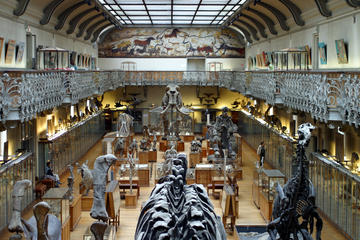Museum of Natural History (Musee dHistoire Naturelle)
TIME : 2016/2/22 10:52:41

Museum of Natural History (Musee d'Histoire Naturelle)
Founded during the French Revolution in 1793, the Museum of Natural History, or Musee d'Histoire Naturelle, took over the grounds of Louis XIII’s Royal Medicine Plant garden and prevailed under the guidance of naturalist pioneers Jean-Baptiste de Lamarck and Étienne Geoffroy Saint-Hilaire. Despite once rivaling the University of Paris’ scientific research departments, the museum is now best famed for its educational collections, focusing its research on environmental studies and preservation work.
Today, the vast museum complex is split into three different areas – a Paleontology museum, a Taxonomy wing and a Geology museum. The Museum of Paleontology is renowned for its prolific collection of bones and fossils, including a spine-tingling display of dinosaur skeletons and a lifelike collection of exotic taxidermy. Next up, the Taxonomy division focuses on plant life, with indoor and outdoor exhibits featuring a herbarium, containing around 8 million plant specimens, a small zoo and aquarium and some of the city’s most spectacular botanical gardens stretching over 26 hectares, including tropical greenhouses, a manmade labyrinth and a colorful rose garden. Finally, the Geology section houses a wide range of interactive exhibits alongside the acclaimed Gallery of Mineralogy.
